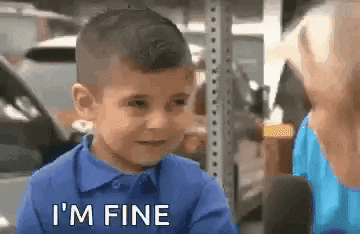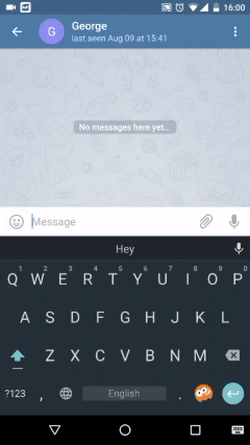It's pretty meta to type "giphy" into https://giphy.com/, but I did it. In fact, I find myself gif-ing more and more recently. And as a linguist, I am cursed to have to have a meta conversation about my use of gifs (in conversation). A friend once called this the "linguist's sickness". If this is where you stop reading, go ahead. I won't be insulted.

One of the more impactful papers I have read recently is Language as Description, Indication, and Depiction from 2018 by Lindsay Ferrara and Gabriella Hodge. The basic idea in this paper is that when we try to communicate with one another often we say what we mean with a bunch of words, sometimes we point to what we mean, and other times we show what we mean. Any utterance could potentially have just one or two or all three of these ways of getting you to think about what I want you to think about in the way I want you to think about it. Depending on my intent and the context, one way may be better than the other.
Some languages, like Japanese and Korean, have agreed that just using a bunch of wordy-words is pretty boring - so they have a bunch of what amounts to socially acceptable onomatopoeia they can use to show you what they mean. You remember that music video from 2013, "What does the fox say?" That's all about onomatopoeia (go rewatch it, you know you want to). Languages like Japanese have whole dictionaries of these kinds onomatopoeia and they are definitely NOT restricted to just animals sounds. English, and most other languages spoken in WEIRD (Western European Industrialized Rich and Democratic) countries, have truly impoverished depictive systems. To be clear, in face-to-face conversation we do alright. I recently listened to my uncle-in-law tell stories about himself while demonstrating some really great depictions as he showed the shapes of engineering things with his hands and imitated what the idiots he told off sounded like.
But when it comes to writing, English is at a big disadvantage. Humans need all three ways of communicating to "language" with each other well, and emoji and gifs are our Silicon-Valley-delivered solution. The point of a depiction is that I invite you imagine what I mean. Sometimes I don't want to say exactly what I mean, sometimes I need to show you and let you fill in the gaps. This gif (un)ironically illustrates exactly what I mean.

The meaning given to the pile of words "Lets go out to eat" is enhanced by Donald Duck here going to town on a plate. The recipient of the message needs to use their imagination to decide just how hungry 'George' is and how urgently he would like to consume sustenance. A picture is worth a thousand words, and I wager a gif is worth much more.
Why do we love gifs so much? Because when we started writing stuff down so much we ignored part of what makes human communication work so well. I don't know if gifs completely solve the problem, but they sure make me feel like I'm languaging better.
